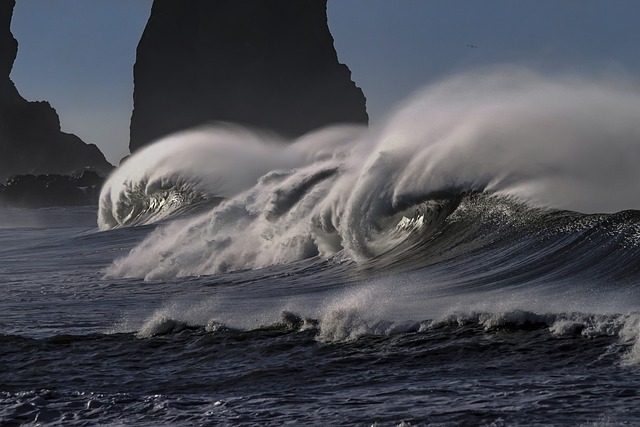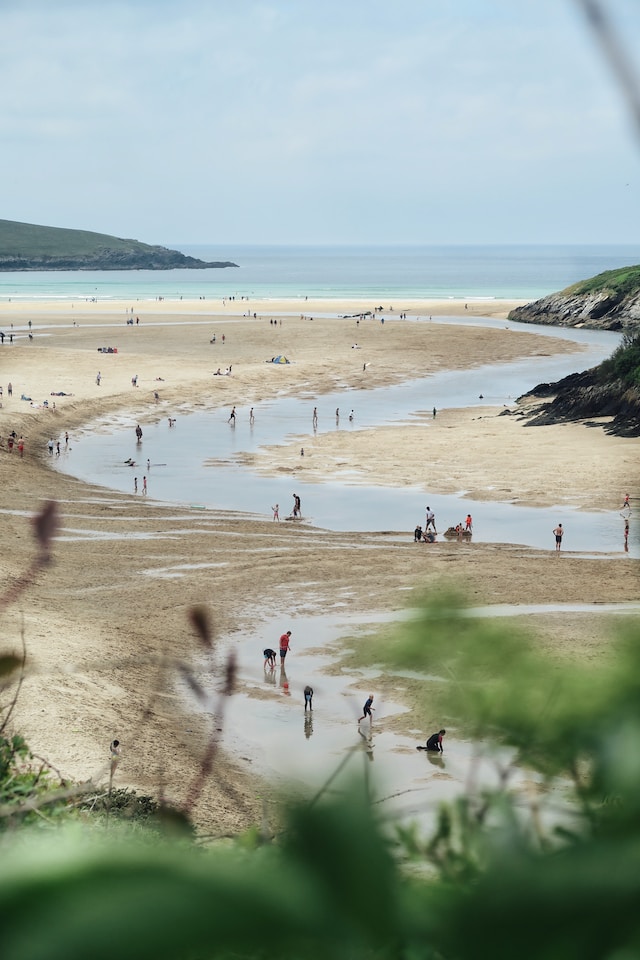
The world is experiencing an unprecedented shift towards renewable energy, and tidal energy has emerged as one of the most promising sources of clean energy. Tidal energy is derived from the gravitational forces of the sun and the moon, which cause ocean tides to rise and fall every day.
The potential of tidal energy is enormous, as there is a constant supply of water movement. Unlike wind or solar energy, tidal energy is predictable and reliable, making it an attractive and stable source of power. Tidal power plants do not produce any greenhouse gases, which contributes to reducing harmful emissions that have adverse effects on our environment.
How Tidal Energy is Harnessed
Tidal energy is a remarkable source of renewable energy that holds immense potential for powering our future. It is harnessed through various technologies that enable the transformation of the ocean’s tidal movements into electricity. Here, we will explore some of the most common methods used to harness tidal energy:
Tidal Barrage
Tidal barrages are large dams built across tidal estuaries or coastal areas. The structure includes sluice gates or turbines that allow the free flow of water during high tides. As the tide recedes, the gates are closed, trapping water in a reservoir behind the dam. When the sea level drops, the gates are opened, and the stored water flows back into the sea through turbines. The movement of the water turns the turbines, generating electricity.
Tidal Stream Generators
Tidal stream generators operate similarly to wind turbines, but they are placed underwater to capture the constant movement of tidal currents. These generators consist of rotor blades that are driven by tidal currents, rotating a central shaft connected to an electrical generator. The spinning generator produces electricity, which is then transmitted to the onshore grid.
Dynamic Tidal Power
The concept of dynamic tidal power involves the construction of long, curved dams perpendicular to the coastline in areas of strong tidal currents. These dams feature sluice gates or turbines that take advantage of the powerful energy of ocean waves. As tidal waves crash against the dam, the force drives water through turbines, converting the kinetic energy into electricity. The constant ebb and flow of the tides provide a reliable and consistent source of power.
Benefits of Tidal Energy Harnessing

Renewable and Clean: Tidal energy is entirely renewable, relying on the gravitational forces of the sun and moon, making it an abundant and sustainable source of power. It produces no harmful emissions or pollutants, contributing to a cleaner and healthier environment.
Predictable and Reliable: Unlike other renewable energy sources like wind or solar, tidal energy is highly predictable due to the regular and cyclic nature of tides. This predictability allows for efficient grid integration and stable power generation.
Long Lifespan: Tidal power infrastructure, such as tidal barrages and generators, is designed to withstand harsh marine conditions, ensuring a long lifespan of operations. This longevity enhances the sustainability and economic viability of tidal energy projects.
Energy Independence: Tidal power reduces the dependency on fossil fuels and foreign energy sources. By harnessing the power of the oceans, coastal communities and countries can achieve a greater degree of energy independence while reducing their carbon footprint.
Environmental Impact and Sustainability:
Marine Ecosystems:
Tidal energy projects can have both positive and negative impacts on marine ecosystems. The construction of tidal barrages or dams may alter the natural flow of water, potentially affecting the distribution and behavior of marine species. However, the creation of tidal power sites also provides the opportunity for the development of artificial reefs, enhancing marine biodiversity.
Fish and Marine Mammals:
Proper planning and design of tidal energy projects can mitigate the impact on fish and marine mammal populations. This includes the installation of fish-friendly turbines that have wide gaps to allow fish to swim through safely. Sensitive areas for marine mammals can also be avoided during the construction and operation of tidal devices.
Noise Pollution:
The operation of tidal devices can generate noise, which may affect marine animals that rely on sound for communication and navigation. However, advancements in technology have led to the design of quieter turbines, minimizing potential disturbances to marine life.
Sediment Transport:
Tidal barrages can potentially disrupt the natural movement of sediments along coastlines. These sediments are important for maintaining the stability of coastal ecosystems. Careful monitoring and management of sediment movement are crucial to ensure the long-term sustainability of affected areas.
Coastal Landscapes:

The construction of tidal barrages or dams may result in the alteration of coastal landscapes. While this can impact the aesthetic value of the area, such changes can also create new habitats and recreational opportunities, benefitting local communities.
Sustainability Measures:
To ensure the sustainable development of tidal energy, comprehensive environmental impact assessments should be conducted prior to project implementation. These assessments should include measures to mitigate potential negative impacts on marine ecosystems and prioritize biodiversity conservation.
- Collaboration with local communities, stakeholders, and experts is crucial for the successful integration of tidal power projects. By involving all relevant parties, sustainable solutions can be identified and implemented.
- Ongoing monitoring and research are essential for understanding the long-term effects of tidal power installations on the environment. Continuous assessment of the ecological impacts and adaptation of projects to mitigate any unforeseen challenges are vital for sustainability.
Challenges and Future Outlook
Cost: One of the major challenges in harnessing tidal power is the high initial cost of installation and maintenance. Building infrastructure for tidal barrages or tidal stream generators requires substantial investment. However, as technology advances and economies of scale are achieved, the cost of tidal power is expected to decrease, making it more financially attractive in the future.
Environmental Impact: While tidal energy is a clean and renewable source of power, its implementation can have both positive and negative environmental impacts. As discussed earlier, careful planning and mitigation measures are needed to minimize disruption to marine ecosystems. Continued research and development in this area are crucial to ensure the sustainable growth of tidal energy projects.
Grid Integration: Integrating tidal energy into existing power grids can present challenges. Tidal power is predictable, but the timing of peak tides may not always coincide with peak energy demand. To maximize the benefits of this renewable energy, the development of smart grid technologies and energy storage solutions is essential.
Social Acceptance: Like any energy project, tidal energy installations can face opposition from local communities and stakeholders. Concerns about potential disruptions to fishing activities, tourism, and cultural heritage must be addressed through transparent and inclusive engagement processes. By involving local communities in the decision-making and sharing the benefits, tidal power projects can gain greater social acceptance.
Future Outlook:
Technological Advancements: Researchers and engineers are continuously working to improve the efficiency and cost-effectiveness of tidal energy technologies. Advances in turbine design, materials, and manufacturing techniques are expected to boost performance and lower costs, making tidal energy a more viable option for widespread adoption.
Combined Energy Systems: The integration of tidal energy with other renewable energy sources, such as wind and solar, can enhance the reliability and stability of the power supply. By combining these energy systems, complementary patterns of energy generation can be utilized, optimizing the utilization of resources and reducing reliance on fossil fuels.
Global Expansion: Currently, tidal energy projects are concentrated in a few countries with favorable geographic conditions, such as the United Kingdom, Canada, and France. However, as the technology improves and knowledge is shared, more countries with suitable coastal areas may embrace tidal energy. This expansion will contribute to diversifying the global energy mix and reducing carbon emissions.
Offshore Deployment: The development of advanced offshore technologies will enable the deployment of tidal devices in deeper waters, where tidal currents are typically stronger. As offshore installations become more cost-effective and efficient, they will open up new opportunities for harnessing tidal energy on a larger scale.

International Collaboration: The future of tidal energy requires extensive collaboration between countries, research institutions, and industry stakeholders. Sharing knowledge, best practices, and lessons learned will accelerate technological advancements and promote the sustainable development of tidal energy globally.
Tidal energy has the potential to play a significant role in our transition to a sustainable and carbon-neutral future. While there are challenges to overcome, ongoing research, technological advancements, and collaborative efforts will pave the way for wider adoption of this clean and reliable source of renewable energy. By harnessing the immense power of the tides, we can reduce our dependence on fossil fuels and contribute to a greener and more sustainable world.
